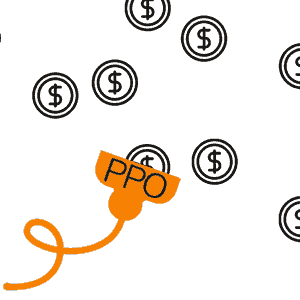Data: Zenith Pays Medicare Rates for E/M Services

According to data from over 10,000 e-bills submitted for 2022 dates of service via daisyBill, insurer The Zenith paid 76% of the reimbursement rates established by California’s Official Medical Fee Schedule (OMFS) for Evaluation and Management (E/M) services for newly injured workers — which equaled about 102% of Medicare rates.
For established patients, The Zenith paid only 75% of OMFS reimbursement rates for E/M services — which equaled about 101% of Medicare rates.
OMFS rates were roughly 134% of Medicare rates in 2022. This was not the result of generous California regulators wishing to enrich doctors; the 34% premium was California regulators’ acknowledgment that treating injured workers requires more physician work and is more administratively expensive than treating Medicare patients.
Even worse, for the two most frequently reported E/M services, The Zenith reimbursed doctors below Medicare rates. Our data reveal The Zenith:
- Reimbursed doctors just 95% of the rate allowed by Medicare for CPT 99204, an intermediary E/M service for new patients
- Reimbursed doctors just 96% of the rate allowed by Medicare for CPT 99214, an intermediary E/M service for established patients
Question: How does The Zenith circumvent (The) OMFS? Answer:
- First, The Zenith uses its Medical Provider Network (MPN) to restrict the doctors from whom an injured worker may receive care.
- Next, The Zenith requires its MPN doctors to accept sub-OMFS reimbursements for treating those injured workers — by requiring the doctors to participate in a Preferred Provider Network (PPO).
Essentially, California allows insurers like The Zenith to use MPNs to keep injured workers away from any doctor who insists on reimbursement at the rates established by the state.
Zenith 2022 E/M Payment/Denial Rates (New Patients)
E/M codes are the bread-and-butter procedure codes providers use to report the level of E/M services required during a patient visit. As such, E/M codes offer an instructive snapshot of the deleterious effects PPO discount contracts have on California practices.
In 2022, Zenith’s reimbursement for new-patient E/M codes varied — to Zenith’s distinct advantage. The data below show that The Zenith reimbursed new-patient E/M codes at rates below the OMFS. Zenith’s E/M reimbursement rate for new patients was 76% of OMFS rates, equaling 102% of Medicare.
The most frequently reported E/M code by far, CPT 99204, is also the code for which The Zenith paid the lowest reimbursements:
- CPT 99204 represented 56% of all new-patient E/M codes daisyBill doctors billed to The Zenith in 2022.
- The Zenith reimbursed CPT 99204 at 71% of the OMFS rate.
- The Zenith reimbursed CPT 99204 at 95% of the Medicare rate.
Also of note, The Zenith denied payment for 14% of new-patient E/M codes — including, shockingly, denial of payment for CPT code 99203 23% of the time.
E/M New Patient CPT |
Bill Count |
% of Total Bill Count |
Paid E/M Count |
Denied E/M Count |
Denial % |
Paid % of OMFS Rate |
Paid % of Medicare Rate |
99203 |
294 |
14% |
215 |
67 |
23% |
94% |
126% |
99204 |
1,164 |
56% |
998 |
134 |
12% |
71% |
95% |
99205 |
620 |
30% |
518 |
90 |
15% |
78% |
105% |
Totals |
2,078 |
100% |
1,731 |
291 |
14% |
76% |
102% |
Zenith 2022 E/M Payment/Denial Rates (Established Patients)
In 2022, Zenith’s reimbursement for established-patient E/M codes varied — also to Zenith’s distinct advantage.
The data show that The Zenith reimbursed all established-patient E/M codes at rates below OMFS. In total, Zenith’s E/M reimbursement rate for established patients was 75% of OMFS, which was 101% of Medicare.
Again, the most frequently reported code by far, CPT 99214, is also the code for which The Zenith paid the lowest reimbursements:
- CPT 99214 represented 65% of all established patient E/M codes doctors billed to The Zenith in 2022.
- The Zenith reimbursed CPT 99214 at 71% of the OMFS rate.
- The Zenith reimbursed CPT 99214 at 96% of the Medicare rate.
The Zenith denied payment for 11% of established-patient E/M codes, including denial of payment for CPT 99212 42% of the time.
E/M Established Patient CPT |
Bill Count |
% of Total Bill Count |
Paid E/M Count |
Denied E/M Count |
Denial % |
Paid % of OMFS Rate |
Paid % of Medicare Rate |
99211 |
41 |
0% |
41 |
0 |
0% |
94% |
126% |
99212 |
184 |
2% |
107 |
77 |
42% |
90% |
120% |
99213 |
1,767 |
21% |
1,586 |
187 |
11% |
89% |
120% |
99214 |
5,474 |
65% |
4,887 |
497 |
9% |
71% |
96% |
99215 |
928 |
11% |
754 |
168 |
18% |
77% |
103% |
Totals |
8,394 |
100% |
7,375 |
929 |
11% |
75% |
101% |
PPO Rates: A Terrible Deal for Providers
To understand just how unsustainable it is for claims administrators to pay Medicare rates (or below) for treating injured workers, consider the administrative steps involved in new patient E/M services for workers’ comp.
- Confirm provider participation in any applicable Medical Provider Network (MPN) — an often difficult or impossible task given the lack of any comprehensive database on employer MPNs and provider participation.
- Complete the 3-page Form 5021 (Doctor’s First Report of Injury), shown below.
- MAIL two copies of Form 5021 to the employer or insurer within 5 days of treating the injured worker
- If additional treatment is required, complete DWC Form RFA (below)
- Fax Form RFA (along with Form 5021) to the claims administrator
-
Process the (often absurd, lengthy, convoluted) Utilization Review (UR) decision sent by the claims administrator in response to the RFA (see the absurd, lengthy, convoluted example UR decision from Zenith below)
- Schedule the injured worker for authorized treatment
- If necessary, refer the worker for additional treatment by a specialist — who must also be a member of any applicable MPN (good luck figuring that out).
- Include Form 5021 with the bill, along with a narrative description of the E/M services provided.
None (repeat, none) of the above physician or administrative work is necessary for Medicare patients — to say nothing of the arduous process of billing for treatment rendered (and appealing improper denials and adjustments). For excellent reasons, California established OMFS rates at 134% of Medicare in 2022 and almost 140% of Medicare in 2023.
The PPO Trap: How Zenith Pays Medicare Rates for Workers’ Comp.
How is Zenith able to pay such paltry amounts for treating injured workers? The answer is the Anthem Blue Cross PPO. Zenith requires providers to participate in PPOs and therefore accept PPO reimbursement discounts, under threat of being excluded from Zenith’s MPN.
It’s a classic “pay-to-treat” arrangement. In the letter below, we see the consequences of one provider’s refusal to participate in the Anthem PPO — a decision for which Zenith imposed immediate consequences.
This is the reality of workers’ comp in California:
- The state establishes fee schedule rates considered commensurate with the time, effort, and expenses necessary to treat injured workers.
- Claims administrators use MPNs to rope providers into PPOs, imposing steep discounts on the fee schedule rates.
- Providers avoid treating injured workers.
- Injured workers are left in the cold.
- (Injured workers seek assistance from an applicant attorney.)
The Zenith is just one example. Our publicly available reimbursement data show the bigger picture, and it’s not pretty — the overall reimbursement rate for all the providers in our system stands at roughly 82% OMFS (114% Medicare) as of this writing — and that’s with the considerable advantages of advanced e-billing software.
From the perspective of providers trying to keep a practice running while giving injured workers the care they need, this math just doesn’t add up.
Workers’ comp can work for providers. daisyBill software, data, and expertise make billing easier, faster, and less costly. Request a complimentary demonstration below.
REQUEST DEMO
DaisyBill provides content as an insightful service to its readers and clients. It does not offer legal advice and cannot guarantee the accuracy or suitability of its content for a particular purpose.





.gif)